
Across the Waves,
Over
the Horizon
The Docks at Palos de la Frontera1
(Huelva, Spain)
by Luife Galeano
In a semicircular bay on the river Tinto laid three naos2 commissioned by Her Majesty Queen Isabella I. Three splendid ships built on Columbus' solemn promises of insurmountable riches and power that the mission would render to the Spanish throne and to the dissemination of the Catholic faith across the mythical Cathay. To port lays the Niña, the smallest and Columbus’ favorite. In the center, gallantly defying the winds, sat the Santa María, the captain of the fleet. To starboard lingered the Pinta, the ship of the sinister Pinzon.
"I still do not understand how you could tell the Queen a lie of such magnitude!"
"Calm down, my faithful don Martin Alonso, these measures were taken from Pierre d'Ailly's Imago Mundi, an authority among the scholars."
"But, don Cristobal, you did not take into consideration the different units of measure! Alfagrano3 says that a degree corresponds to 56 2/3 miles but his mile is larger than the Greek and Latin mile used in our maps!"
"Politics, my dear friend, politics! The Queen asked how long the trip would take pressured by her financials difficulties. The taking of Granada devastated the royal treasury and she is in grave need of gold. Shortening the trip was the assurance of her acceptance and, besides, it is impossible to verify my calculations with quadrants and other instruments."
Martin Alonso de Pinzon turned to the docks. A magnificent fleet stood before his eyes. His only fear was whether they could reach those elusive lands in time.
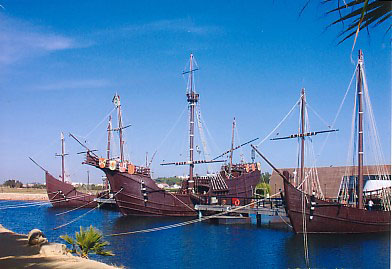 |
| From l to r, the Pinta, Santa María and La Niña. |
"Come and help me with the arrangements —offered don Cristobal—. Let's check on La Niña, my favorite."
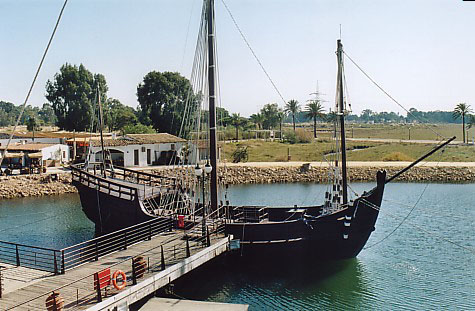 |
| La Niña. |
"We must see that she gets a fair amount of cargo and grease those ropes. I wouldn't want to suffer any accidents in the open seas. Where is Vicente Yañez, anyway?"
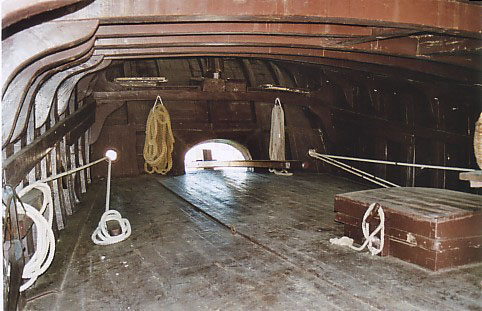 |
| Covered hind deck showing the mechanism of the rudder. |
"He’s manning the Pinta. You can see him from here."
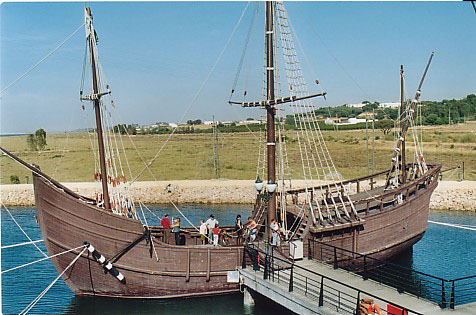 |
| La Pinta. Notice the relative size of the ship to the people. Amazing how they traveled over 6000 miles. |
"Good, then we must see that the Santa María is properly taken care of. Follow me don Martin Alonso. I don't trust the roughnecks the Governor of Seville sent to accompany us in this trip."
"They were rotting in the gallows. I guess they preferred a death at sea than at the hands of the Governor."
"Quite frankly, my friend, any death is better than the one offered by the Governor!"
Slowly they reached the captain ship, the Santa María, she was splendorous waiting for her master to put her at sea, totally decided to reach the lands of the unknown world and to remain there for the rest of her life.
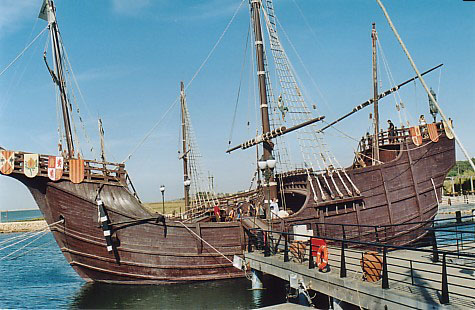 |
| The Santa María with the seals (from l to r on the bow) Navarre, Granada, Castile and Aragon. |
"I see that we have a busy crowd on board. Let’s hope their spirits hold while at sea."
" Strong hand, don Cristobal, strong hand. These miserable sailors understand very little of good manners!"
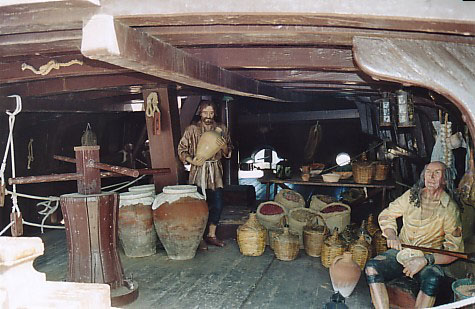 |
| On board the Santa María. Life could be very simple at sea. Sailors slept with the cargo making sure food wouldn’t rot or spill. |
"Very well, don Martin Alonso, I will be in my quarters. Let the men enjoy their last night ashore and be ready to set sails tomorrow."
"It's a risk but I must make sure I reach the Indies. Against all good judgments I must take favorable winds after the Canary Islands. Good winds for my return will be useless if I don’t reach the new worlds first."
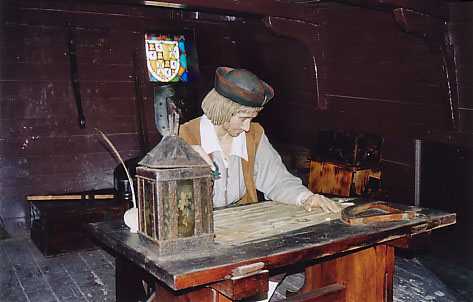 |
| Columbus in his quarters charting his first voyage. |
On August 3rd, 1492, Columbus set sail into the ocean. He would navigate through the Sea of Darkness hoping, with all his heart, to make his dreams come true. All his eyes could see were the still, menacing waters and the sun setting each day on the horizon hoping, one day, to reach the unknown.
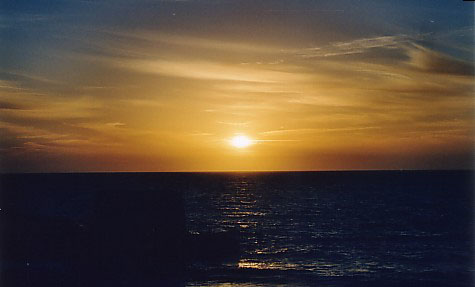
1Palos de la Frontera is a name given recently to the town formerly known as Palos de Moguer. Not to be confused with Moguer a town some 8 kms to the north.
2Naos: type of ship of the fifteenth century. Caravels.
| Home | Contact Us | Credits | Sitemap |
© 2004 - Imagiverse Educational Consortium
